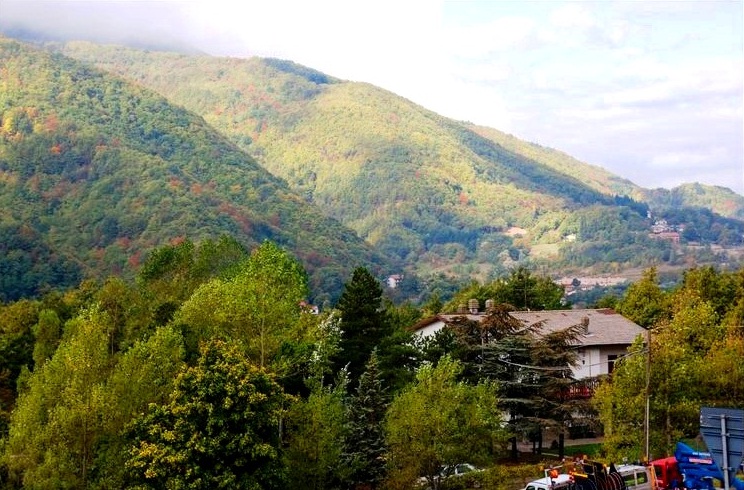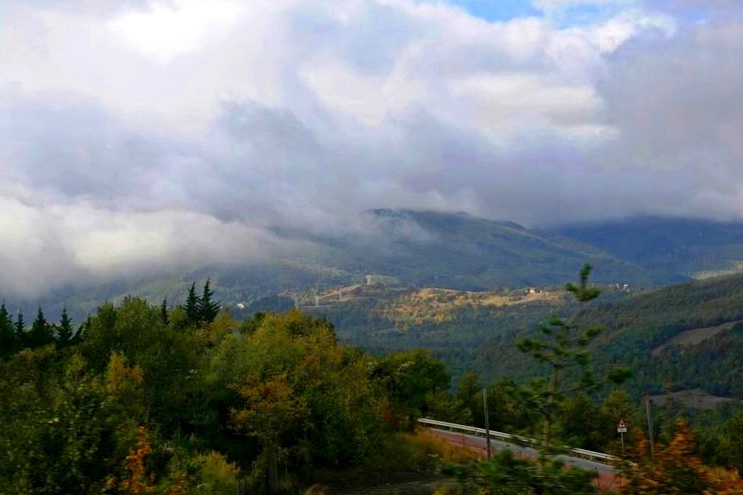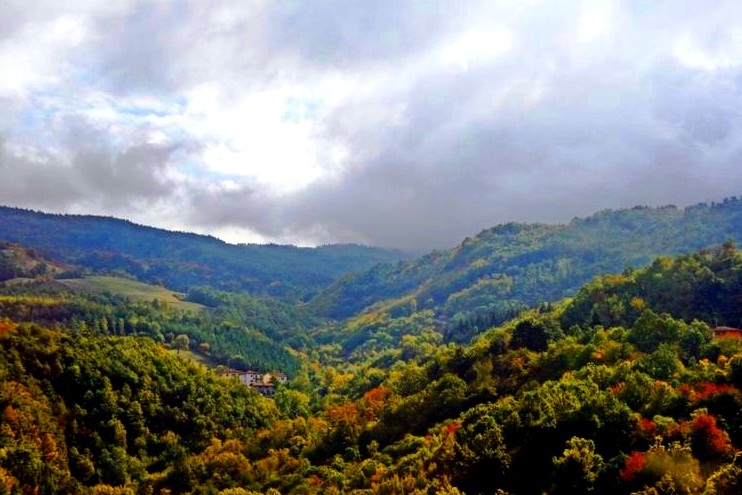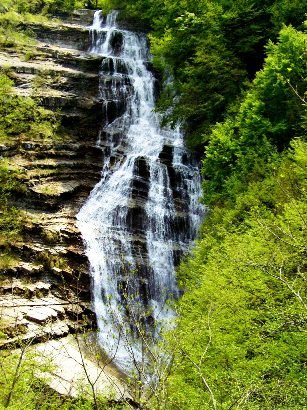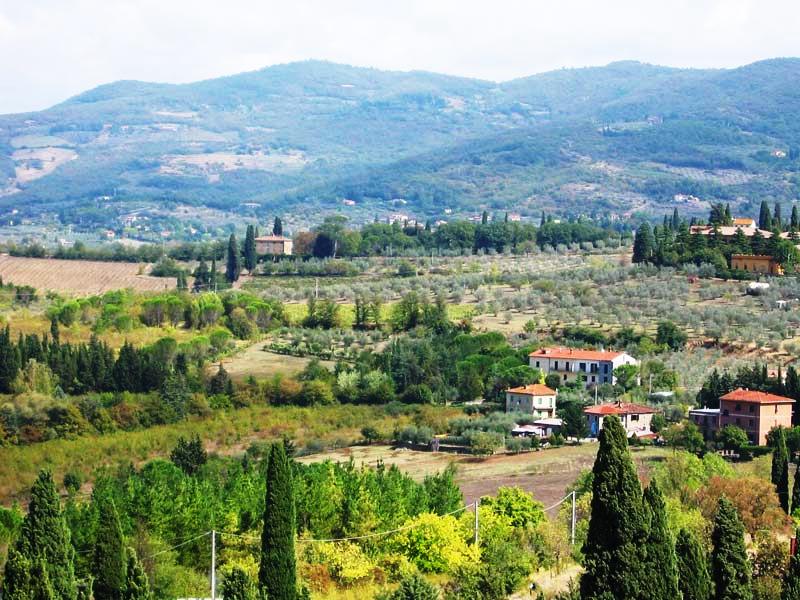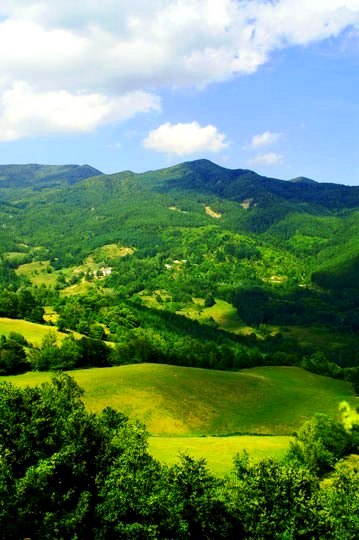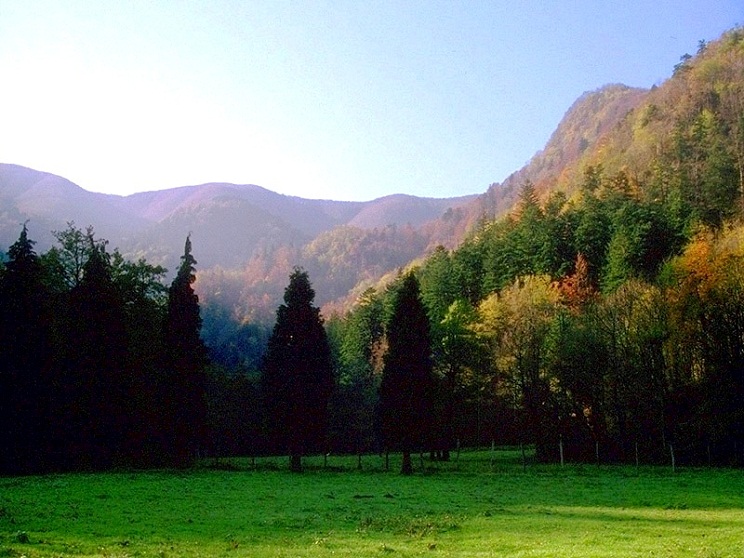Destinations / The most beautiful places to visit in Casentino, Italy / Foreste Casentinesi, Mount Falterona and Campigna National Park
Foreste Casentinesi, Mount Falterona and Campigna National Park
About Foreste Casentinesi, Mount Falterona and Campigna National Park
Foreste Casentinesi, Mount Falterona and Campigna National Park is one of the most renowned national parks in Italy and one of the most ancient forests in Europe. It is a large protected area lying in the Apennines of Tuscany and Romagna that includes the largest and best-preserved woodland areas and forests in Italy.
Founded in 1993, the park covers a wide stretch of territory with an approximate area of 36,400 hectares and includes the provinces of Forli-Cesena, Arezzo and Firenze. Of the total area, 18,696 hectares of land are located in the Romagna region. This part is characterized by slopes engulfing narrow valleys in between and includes the Montone, Rabbi and Bidente valleys. The Bidente River divides into three branches creating the valleys of Corniolo, Ridracoli and Pietrapazza. The Toscana part extends on a small part of the Mugello area and includes the Casentino that occupies the upper Arno Valley and the springs of the Arno River from the southern slopes of Mount Falterona. Along with Mount Falco, this is the highest peak of the park, being over 5.000 feet tall. The heart of this park is represented by the Foreste Demaniali Casentinesi, a seculary-old woodland area abundant in flora and fauna. With a unique natural beauty, the management of the national park has made great efforts to protect this forest area. In the center of the park there is located Sasso Fratino Nature Reserve, established in 1959, which is another spectacular area to not be missed in the park. Also here, visitors can also visit the Pietra Nature Reserve. Altogether, the mountains, valleys and rivers harmoniously combine to offer breathtaking views and unforgettable sceneries for those looking for a retreat from the heat and tourist crowds of Florence and Bologna. Also here, evidence of millenary human presence can be traced, in ruins, old houses, abandoned villages and mule tracks. There are several monasteries, hermitages and parishes within the national park that are worth paying a visit. Above all, the two ancient sanctuaries of Camaldoli and La Verna are a must, as they are the two most important hermitages in the national park. The beauty of these places inspired Dante and Ariosto, famous literary men, while spiritual men like Saint Romualdo and St. Francis found their refuge here in the park.
Flora and fauna
The Foreste Casentinesi, Mount Falterona and Campigna National Park is home to a great heritage of flora and fauna. The climate of the park, which is Mediterranean and alpine, has a great impact on the distribution and type of flora in the area. The rich biodiversity includes 1,358 different species of vegetation together with 1,219 different specimens of herbaceous. In the hilly areas of the park, up to about 800 m, the forests include different tree species such as Turkey oak, field maple, Italian maple, hop-hornbeam, common hornbeam, manna ash, service tree, wild service tree and small clusters of chestnut trees; among the main species of shrubs that can be found here are the common hawthorn, golden shower tree, cornelian cherry and common dogwood, with willow and hazelnut predominantly along waterways; beautiful violets, hellebores, lungworts, wood anemones and primroses make it an enchanting place. Between 800-900 m and 1,200 m, typical species for the Apennine woodlands can be found. Meadows on the upper parts together with beech and silver fir, sycamore maple, Norway maple, ash and wych elm is the vegetation here that creats a unique park landscape. The slopes in Romagna feature thousands of acres of pristine woods that have remained intact as a result of the great protection from the authorities and reforestation efforts.
The Foreste Casentinesi, Mount Falterona and Campigna National Park boasts an exceptional fauna as well, perhaps the richest and most varied in the northern Apennine area. The golden eagle, wolf, wild boar, fallow deer, roe deer, beech-martens, weasels, badgers, polecats, foxes yellow-necked field mice, dormice, squirrels and numerous other species can be found here. There are more than 80 species of birds, among which blackcap, chaffinch, winter wren, blackbird, robin, coal tit, sparrow hawk, kestrel, buzzard, honey buzzard, goldcrest, song thrush, mistle thrush, wood-pigeon and common treecreeper. A large array of reptiles and amphibians are part of the habitat as well, such as fire salamander and Italian stream frog.
Places of interest
This park draws a lot of tourists not only for its beautiful nature but also for its ancient towns that maintain intact the historical traditions and natural wonders. Bagno di Romagna is the most important mountain town of the Savio Valley. Once a famous thermal resort, the city is worth visiting for its interesting architecture; make sure not to miss Basilica di Santa Maria Assunta and the buildings located on Via Fiorentina, with the highlights on Palazzo Capitano. Further on, you can visit the charming Pietrapazza Valley and the village of Poggio alla Lastra. Premilcuore in the high Rabbi Valley is a site that should be included in your itinerary as well, with its historical centre with remains of the Rocca, the Porta Fiorentina, Palazzo Briccolani, and Oratorio di San Lorenzo.
Visitors are also advised to pay a visit to Pieve di San Martino in Alpe, the Molino, the village of Castel dell'Alpe, the Oratorio del Mogio, and the village of Fiumicello. Santa Sofia is one of the most important towns in the Comunità del Parco, in the Bidente Valley, with highlights on the following architectural sites: Palazzo Giorgi and the Chiesa di Santa Lucia. In the proximity, the village of Corniolo is located, with the Oratorio della Beata Vergine della Crocetta dating from the 18th century and the old hamlet of Corniolino. Head on to visit the Giardino Botanico di Valbonella as well as the town of Campigna that gives its name to the forest. Also on the Romagna side of the park, Tredozio on the Tramazzo valley floor can be found, with its Torre civica and Chiesa della Compagnia del SS. Sacramento, Palazzo Fantini, Chiesa di San Michele Arcangelo, Convento della SS. Annunziata and other edifices dating from the 17th and 18th century. Close to Tredozio, visitors can visit the villages of Gamogna and Trebbana, Santa Maria in Castello, lake Ponte and the Fonte del Bepi. The history of the town of San Benedetto in Alpe relates to the name of Saint Romualdo who visited this town twice. Initially one of the most famous monasteries in the Apennines area of Tuscany and Romagna, nowadays there can be seen the defense tower, crypt, arch portal and part of the external walls only. Within a small distance from San Benedetto in Alpe, the famous Acquacheta waterfall can be found, a roaring waterfall which Dante commemorated in the Inferno. The waterfall has a 70-meter drop and offers spectacular scenery. The place was the shelter of Dante during his exile from Florence. You can also walk on the nature trail near the waterfall named “La valle e la cascata di Dante” that extends on about 4.5 kilometer -the best time to visit it is between April to June and September to November. Make a stop in the lovely town of Poppi and seek for the Palazzo Pubblico and its famous staircase, before heading to the monasteries of Camaldoli and La Vernia. The Franciscan sanctuary of La Vernia is very famous on the Tuscan side of the national park and has not changed much throughout time since St. Francis preached here. Its serene and picturesque location is ideal for relaxation and meditation. Camaldoli was a hostel before becoming a monastery for the Camaldoli monks. Within easy reach, there are the Churches of St. Donninio and St. Ilariano, decorated with valuable works by Vasari and beautiful cloisters. In the Camaldoli area, you can hike on the nature trail Alberi e Bosco ("Trees and Forest" in translation).
On your journey to discover the area, you can accommodate yourself in Campigna, a 17th-century palace once owned by a local duke, and now converted into a modern hotel. A good rest is fully recommended as there is so much about the park to discover and explore. Either hiking or visiting the historical landmarks, your trip will definitely be an unforgettable one.
Others The most beautiful places to visit in Casentino, Italy .
Others from The most beautiful places to visit in Casentino, Italy
Scattered with ancient castles and monasteries, medieval towns and century-old hamlets, Casentino will offer you a glance of what Tuscany and Italy really mean, with its colourful past and splendid panoramas.
The proximity to Italy’s major cultural and tourist centres, Florence and Arezzo, the greenish landscape of the oval-shaped valley, lush rolling hills ascending to mountains and ancient sites are the few vantage points that make Casentino a region worth visiting and exploring.
Discover with us the unforgettable Casentino!










